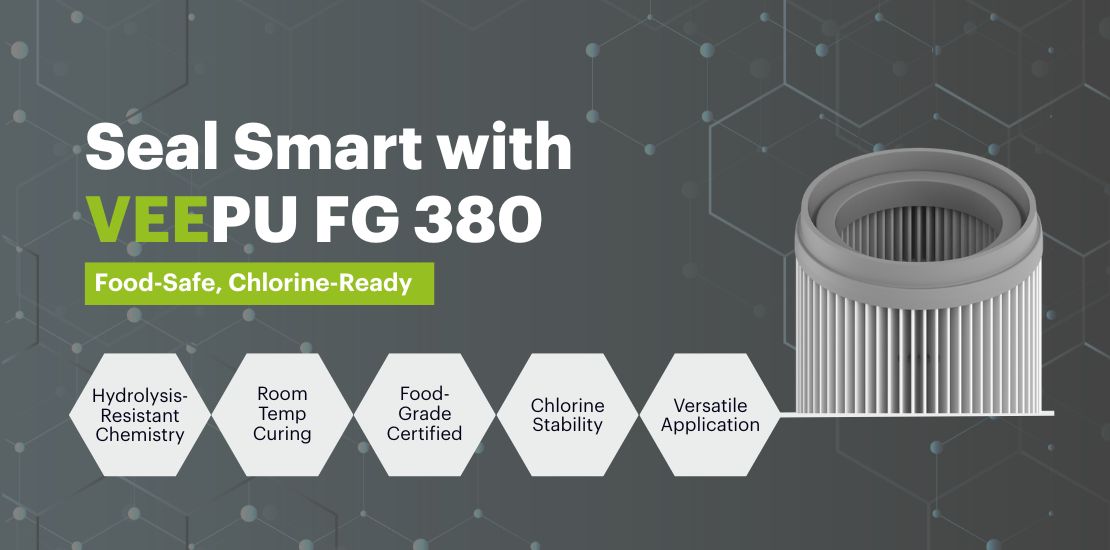- April 23, 2025
- Posted by: Mugdha
- Category: Uncategorized

If you’re making filters for drinking water, food, or beverages, the sealant you use matters. It has to be safe—not just on paper, but in real use.
Here’s what you really need to look for in a food-grade sealant.
1. It shouldn’t release anything into the water or food.
The most important part of food-grade sealant is that the material shouldn’t leach. That means it doesn’t release chemicals, particles, or anything else into what it touches—even when it’s hot, wet, or under pressure.
The sealant is tested through something called migration testing. It simulates what happens when the sealant comes into contact with food or liquid over time. If it passes, it means the material stays where it’s supposed to.
2. It has to hold up in water over time.
Many sealants break down when they’re exposed to water for a long time. This happens through the process of hydrolysis . The material starts softening, cracking, or falling apart. That’s a big issue in filters used in drinking water or food processing.
To avoid that, the sealant has to be made from a formulation that’s resistant to hydrolysis. Polyether-based PU systems, for example, are much more stable in wet conditions compared to standard polyurethanes.
3. It needs to tolerate chlorine.
Chlorine is common in water systems—especially in pools or treated drinking water. But chlorine is harsh on materials. Over time, it can make sealants brittle, discolored, or weak.
A proper food-grade sealant should be tested to withstand high-level chlorine exposure without changing or breaking down. That means the chemistry has to be adjusted to include stabilizers that protect against oxidation.
4. It should stay stable under heat.
Some filters go through hot water, sterilization, or high temperatures during use. Others cure at room temperature but may still see heat during processing.
A good food-grade sealant needs to stay solid. It shouldn’t soften, shrink, or release anything harmful when exposed to heat.
A Closer Look at VEEPU FG 380
This is a polyurethane-based sealant designed specifically for food and water filter applications. Here’s what it offers:
- Migration tested as per food safety standards
- Hydrolysis-resistant polyurethane chemistry
- Chlorine stability for use in treated water and pool filters
- Room temperature curing, low shrinkage, and stable performance under heat
- Used for end caps, gaskets, and bonding in filters for drinking water, food service, and pool systems
It’s been tested for the actual conditions these filters go through—not just certified for the sake of it.
If you’re building filters for food or water use and want to be sure your sealants are safe and reliable, this is worth looking into.
We’ll be at FiltXPO if you’d like to see the material and talk through the details.
